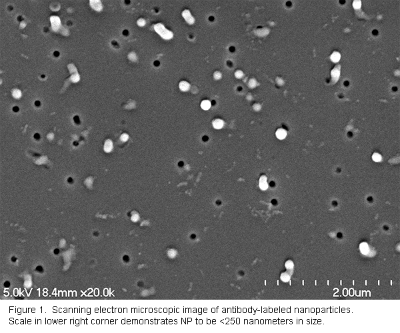|
NOVIDADES
Today, the average life expectancy of someone with HIV is only six months shorter than that of an HIV-negative person. But that’s only if the patient follows his or her drug regimen consistently, according to Chris Destache, PharmD, professor of pharmacy practice in Creighton’s School of Pharmacy and Health Professions. Therein lies one of the biggest challenges for HIV treatment. Destache has worked for years on using nanotechnology to deliver drugs to treat HIV in convenient, long-lasting ways.  Credits: Creighton University
“HIV is a social disease, affecting people with other disease processes, such as psychiatric diseases, addiction, incarceration – and stigma,” all factors that aren’t conducive to a rigorous medication regimen, he says. Earlier HIV medications involved taking three or four drugs up to five times per day. Today, patients can take a formulation with all the drugs in one pill, once daily. But even maintaining that regimen for years can be difficult for some patients. Delivering medication with nanotechnology, however, could mean that an HIV-positive patient might need only one injection every month or so. In Destache’s patented formulation, the drugs are entrapped in a polymer that breaks down slowly to release the drugs gradually. Previously, nanotechnology was used mainly for cancer treatment; its use for treating and preventing infectious diseases like HIV is still a fairly new approach. Around the world, 37 million people are infected with the HIV virus, with less than half – 17 million – receiving treatment, according to Destache. Even for those who do receive treatment, costs are extremely high – up to $75,000 per year – and side effects can be onerous. “For some people,” Destache says, “drugs remind them they have HIV and they get drug burnout. Plus, sometimes when taking the drugs, they just don’t feel good.” This prevents some HIV patients from sticking with their regimen, he says. Destache is researching how to use nanotechnology to deliver a gradual release of the PrEP drugs. The hope is that the nanoparticle containing the drugs can be injected about once per month instead of swallowed daily in pill form. The National Institutes of Health (NIH) awarded Destache a grant of about $1.5 million over a four-year period to look at using different antiretroviral drugs in this promising method to prevent HIV. In a novel approach, his team is also experimenting with combining drugs and a protein that can prevent HIV infection. To infect a cell, HIV needs access to a specific receptor on a particular cell. However, in Destache’s method, a monoclonal antibody blocks that receptor and keeps HIV out of the cell. He earned a $75,000 award to support this research through LB692, which funnels a portion of state taxes from tobacco products to biomedical research. Spending his career at Creighton, Destache says, has given him the ability “to get up every day and say: ‘This is what I’m going to try to accomplish.’” It also provides an environment for collaboration – Destache works closely with a faculty member in the School of Medicine’s Department of Medical Microbiology and Immunology, Michael Belshan, PhD, who is an expert in virus-host cell interactions. In some ways, Destache’s intensive involvement in drug discovery research seems unusual for someone trained as a pharmacist. However, in another sense, it is the perfect extension of that vocation. “You see patients and you see what they are going through,” he says. “You ask yourself, how can you take that back to the lab and improve things? Being able to make positive changes for patients is what pharmacists try and do every day. Pharmacy is about helping people and problem-solving.” Creighton University, Sept 06, 2017. Assuntos Conexos: |
|||||||||||||||||||||||||